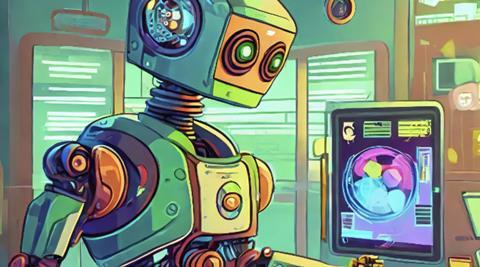Frederic Petitpont, CTO and co-founder of Moments Lab explains how AI is helping reimagine storytelling for a new generation

The media industry is going through a big transformation. Too many manual workflows, reliance on legacy systems, and relentless pressure to cut costs while producing more, have turned the market into a survival-of-the-fittest arena.
Generative AI (Gen AI) and multimodal AI are not just enhancing content discoverability, they are fundamentally redefining the workflow of storytelling. By automating tedious tasks, unlocking the potential of vast media archives, and helping editors gain valuable insights into their media assets, AI is enabling organisations to discover new revenue streams and reinvent how stories are told.
In 2024, the renowned sci-fi author Joanna Maciejewska made a post on X that instantly went viral: “I want AI to do my laundry and dishes so that I can do art and writing, not for AI to do my art and writing so that I can do my laundry and dishes.” This sentiment resonates deeply in the media industry, where repetitive, time-consuming tasks often overshadow creative work.
AI’s most immediate and transformative impact lies in its ability to automate media logging and enhance media discoverability. By handling these tasks, AI allows teams to focus on what truly matters – creativity and strategy.
Consider this: A major US network revealed that it takes five minutes to locate a single shot in its video archive. Sourcing a hundred clips for a 10-minute video could consume an entire day. An AI-powered video discovery platform, however, logs, indexes, and categorises assets automatically, reducing an eight-hour task to mere minutes. In an industry where time is money, AI is proving to be an indispensable ally.
For decades, media organisations have been sitting on vast archives of content, much of which remained underutilised due to the challenges of accessing and managing it. AI is changing this by enabling cost-effective digitisation and providing advanced tools for indexing and searching archives, turning untapped footage into a revenue-generating resource.
One of AI’s most powerful capabilities is its ability to transform legacy content into modern, engaging formats, ensuring its relevance in today’s fast-paced media landscape. By seamlessly integrating historical footage into new projects, AI enables new narratives that resonate with contemporary audiences.
Take, for example, the ability to engage with media libraries using natural language — a feature that unlocks tasks previously impossible for humans. Imagine a one-hour documentary on the architecture of the Moroccan city Casablanca sitting in your archive. While Gen Z might never watch the whole thing, AI can identify key topics and suggest repurposing it into a short video on Neo-Moorish architecture — a fusion of French Art Deco and Moroccan elements.
Without AI, how would a video editor without architectural expertise ever come up with such an idea? This isn’t just about adapting to trends; it’s about reimagining storytelling for a new generation.
This shift is also reshaping how networks approach their OTT platforms. No longer seen as mere broadcasting tools, these platforms are now central to competing with giants like Netflix, Disney, and Prime. By producing more high-quality content while repurposing existing assets, networks are creating exclusive offerings that stand out. For instance, the French channel TF1 uses its archive to create fresh, engaging content on its OTT platform, such as a compilation of the top moments of The Voice over 10 years.
Adopting AI tools isn’t just about technology — it’s about people. Staff must be trained to use these technologies effectively, and organisations need to embrace the learning curve that comes with such a transformative shift. AI isn’t magic, it requires expertise and strategic implementation to unlock its full potential.
Generative and multimodal AI are catalysts for a new era of storytelling. By enabling natural language search through a user-friendly interface, these technologies are redefining how we create and consume content. But storytelling will always need the human spark. Media organisations are uniquely positioned to stay ahead in the content battle as long as they manage to seize the AI opportunity, invest in training, and implement new workflows.

Frederic Petitpont is CTO and co-founder of Moments Lab







No comments yet